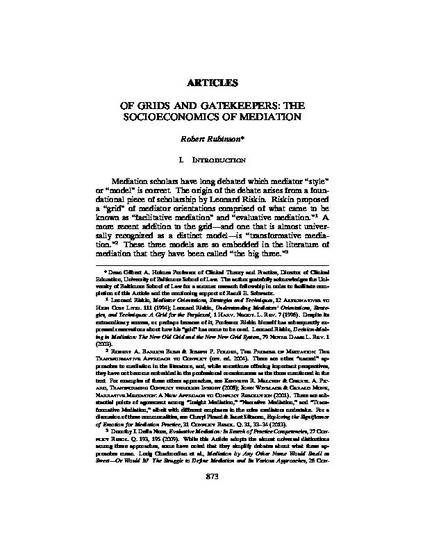
Mediation scholars have long debated which mediator “style” or “model” is correct. The origin of the debate arises from a foundational piece of scholarship by Leonard Riskin. Riskin proposed a “grid” of mediator orientations comprised of what came to be known as “facilitative mediation” and “evaluative mediation.” A more recent addition to the grid—and one that is almost universally recognized as a distinct model—is “transformative mediation.” These three models are so embedded in the literature of mediation that they have been called “the big three.” The influence of Riskin’s work cannot be overstated. It has resonated within the community of mediation scholars and practitioners, suffusing discussions about what constitutes best practices in the field, scholarship, and law school texts. The debate is sometimes framed not as choices, but as what is “true” mediation.
There is, however, a radical disconnect between the rhetoric and reality of mediation. This disconnect has to do with the nature of mediation “on the ground” in contrast to the way a “typical mediation” is presented through scholarship, texts, and trainings.
Available at: http://works.bepress.com/robert_rubinson/27/
